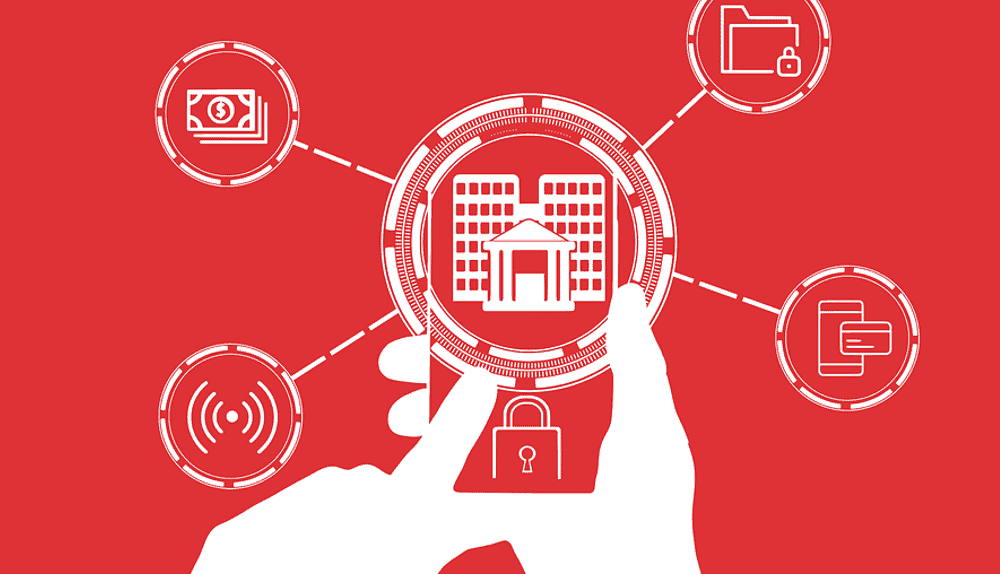The SET or Secure electronic transaction protocol is a security measure implemented on eCommerce platforms to protect electronic payment data over a specific network.
eCommerce refers to buying and selling goods and services over the Internet, and the SET protocol is crucial for ensuring a safe and secure online transaction environment for all parties involved.
But what is a secure electronic transaction protocol exactly? The following section explains the SET protocol’s function in protecting electronic payment data.
What is Secure Electronic Transactions Protocol?
SET is a protocol that ensures the security and integrity of online transactions. Initially adopted by e-commerce websites, SET was designed to secure electronic payments surrounding debit and credit cards.
Furthermore, merchants cannot view personal details transferred to your credit company for verification and authentication. SET isn’t a gateway or payment system. Still, it is a set of protocols that utilize Public Key Infrastructure (PKI) elements to address privacy, authenticity, and security concerns in e-commerce.
Its primary goal is to protect online debit or credit card transactions, offering a secure and confidential environment for all parties involved, including customers and merchants.
SET also authenticates users through digital certificates. The rise of e-commerce sparked its development and was jointly designed by Visa and Mastercard to secure browsers for transactions.
The protocol was later supported by various organizations, including technology firms such as Microsoft and IBM and companies such as Verisign, specializing in internet services and network infrastructure.
Additionally, web services firm Netscape played a role in SET’s development, with Microsoft providing the STT and Netscape contributing to the SSL technology.
Key Takeaways for SET
- Secure Electronic Transaction (SET) is a protocol that started in 1996 to secure credit card and electronic debit payments on e-commerce websites.
- SET allows merchants to verify customers’ card information without seeing it, providing an added layer of security to protect customers against hacking, account theft, and other illegal activities
- Other security protocols for credit card and online debit transactions emerged after SET was first developed in the 1990s
- Visa was one of the first companies to adopt a standard of protocols called 3-D Secure, which was first developed in different forms by Discover, Mastercard, and American Express.
How Does Secure Electronic Transactions Protocol Work?

Secure Electronic Transaction (SET) protocols are designed to provide secure electronic access to funds from a bank account or credit line. Each time an electronic purchase is made, an encrypted certificate is made for the merchant, financial institution, or customer.
This certificate comes with matching digital keys used to verify the transaction and confirm the certificate’s authenticity.
SET algorithms ensure that only authorized participants with the key can confirm the transaction, providing an additional layer of security to protect customers’ card details from potentially malicious online actors.
This added security measure helps to prevent unauthorized access to sensitive information and ultimately protects the privacy and financial information of the customers.
SET is a system developed to provide secure and confidential transactions for all parties involved in the e-commerce transaction, including the customer and merchant.
History of SET Protocol
The emergence of e-commerce in the mid-1990s, particularly consumer-driven online purchases, led to the development of secure electronic transaction protocols.
As conducting business on the Internet was a relatively new concept, the security measures used to protect transactions were still evolving and had varying levels of effectiveness.
The protocols established by SET standards enabled payment systems to be utilized by financial institutions and retailers, as they had the necessary software to process and decrypt digital transactions securely.
In 1996, a group comprising VISA and Mastercard, IBM, GTE, Microsoft, Netscape, RSA, Terisa Systems, and VeriSign aimed to merge incompatible protocols into one standard.
Subsequently, other security protocols for online credit and debit card transactions emerged. As an early advocate of SET, Visa eventually adopted a new protocol called 3-D Secure for secure digital payments and commerce of its customers.
Based on extensible markup language (XML), this protocol is designed to provide a security layer for online debit and credit card transactions.
Secure Electronic Transactions Protocol Architecture
The SET protocol was created to address the security gaps in SSL and Transport Layer Security (TLS) in protecting sensitive consumer data.
It achieves this by utilizing 56-bit session long keys, which are transmitted asymmetrically, as well as symmetric Data Encryption Standard (DES) encryption and Public Key Infrastructure (PKI) for key management.
SET’s Digital Wallet
When a customer enters a password to activate their digital wallet, SET initiates self-authentication before the payment.
After self-authentication, the customer’s device (mobile phone, tablet, or computer) sends the purchase and payment details to the merchant. Once the customer is authenticated and the merchant is notified, the issuer communicates payment authorization to the acquirer.
SET’s Dual Signatures
SET employs digital signatures to achieve card authentication. Each time a customer initiates an electronic transaction, an encrypted digital signature is generated for the merchant, customer, and associated financial institutions.
SET’s Digital Certificates
By manipulating transactional information, digital certificates authenticate the customer and merchant’s identities to reduce the risk of fraud.
Typically, the Certificate Authority (CA) assigns digital certificates to the card issuer or other associated financial institution, meaning both the acquirer and the issuer implement digital certificates.
Benefits of Secure Electronic Transactions Protocol
The Secure Electronic Transactions (SET) Protocol offers a framework designed to ensure secure and reliable transactions, which is particularly beneficial in online shopping and payments. Here are some of the key benefits of adopting the SET Protocol:
- Enhanced Security: SET employs robust encryption and authentication techniques to protect the confidentiality and integrity of payment information during transactions. This significantly reduces the risk of data breaches and unauthorized access to sensitive information.
- Authentication of Parties: SET protocol ensures that all parties involved in a transaction, including the buyer, the merchant, and the bank, are authenticated. This verification process builds trust among parties, as each knows the other is legitimate.
- Non-repudiation: With SET, transactions are indisputable. The digital signatures and certificates used in the protocol provide a reliable audit trail, making it difficult for any party to deny their participation in a transaction.
- Privacy Protection: SET protocol secures personal and financial information through encryption so that this data is only accessible to the issuing and acquiring banks. Merchants cannot access the customer’s card information, which protects consumer privacy.
- Wide Acceptance: Designed with a global perspective, the SET protocol is supported by major card associations, making it widely accepted across different banks and merchants worldwide. This universal support facilitates smoother transactions for customers regardless of their bank or geographic location.
- Reduced Fraud and Chargebacks: By enhancing transaction security and authentication, SET reduces the incidence of fraudulent transactions and subsequent chargebacks to merchants. This protects revenues and reduces the administrative burden associated with managing disputes.
- Customer Confidence: Knowing that their transactions are secure and their personal information is protected, customers are more likely to engage in online shopping, leading to increased sales and customer loyalty for businesses.
- Streamlined Processing: SET automates and secures the transaction process, reducing the need for manual verification and intervention. This efficiency can lead to faster transaction processing times and lower operational costs.
Secure Electronic Transactions Protocol provides a comprehensive solution to secure online payments. A secured online payment system increases trust and confidence among consumers and merchants while mitigating risks associated with online transactions.
Conclusion

Secure Electronic Transactions (SET) protocol is designed to secure electronic debit and credit card payments made on e-commerce websites.
Developed in the mid-1990s in response to the rise of e-commerce, SET uses digital certificates, encryption, and Public Key Infrastructure (PKI) to provide a secure and confidential environment for all parties involved, including customers and merchants.
SET’s main objective is to protect credit/debit card transactions as they occur online, preventing unauthorized access to sensitive information and ultimately protecting customers’ privacy and financial information.
The SET protocol filled the gap left by SSL and Transport Layer Security (TLS) regarding the security of sensitive consumer data. SET’s digital wallet, dual signatures, and digital certificates all work together to achieve card authentication and reduce the risk of fraud. E-commerce websites initially adopted SET, but other security protocols later emerged.
Frequently Asked Questions
What is SET Protocol?
SET Protocol stands for Secure Electronic Transactions Protocol. It's a security standard designed to ensure secure transactions over the internet, primarily used for credit card payments. It employs encryption and digital signatures to protect data and verify the authenticity of all parties involved in a transaction.
How does the SET Protocol work?
SET works by using a combination of digital certificates and encryption to safeguard transaction information. When a purchase is made, SET ensures that the transaction details are encrypted and that both the merchant and the buyer are authenticated using digital certificates. This process protects the data from being intercepted or altered during transmission.
Who benefits from using SET Protocol?
Both consumers and merchants benefit from using the SET Protocol. Consumers enjoy enhanced security and privacy for their financial information, while merchants benefit from reduced fraud and chargebacks, leading to a more trustworthy online shopping environment.
Do I need special software to use SET Protocol?
Yes, to participate in transactions protected by SET Protocol, both merchants and consumers need to use software that supports SET. This includes digital certificate management tools and compatible web browsers or payment applications.
Is SET Protocol still used today?
While SET Protocol was a significant step forward in securing online transactions, its adoption was limited due to the complexity and the requirement for extensive infrastructure changes. Today, other standards and technologies, like SSL/TLS and EMVCo's Secure Remote Commerce, continue to evolve and address the security needs of online transactions, building on the foundation laid by SET.
What makes SET Protocol secure?
SET Protocol's security comes from its use of encryption, digital signatures, and digital certificates. These elements ensure that all transaction information is securely transmitted and each party in a transaction is authenticated, minimizing the risk of fraud.
Can SET Protocol be used for all types of online payments?
While SET was designed primarily for credit card transactions, its principles of encryption, authentication, and data integrity can be applied to various types of online payments. However, practical usage was mainly confined to credit card transactions.
How does SET Protocol differ from SSL/TLS?
SSL/TLS (Secure Sockets Layer/Transport Layer Security) encrypts the entire communication channel between a user's browser and a web server. In contrast, SET Protocol specifically secures credit card transactions and involves the authentication of both the buyer and the seller, offering a higher level of security for financial transactions.

